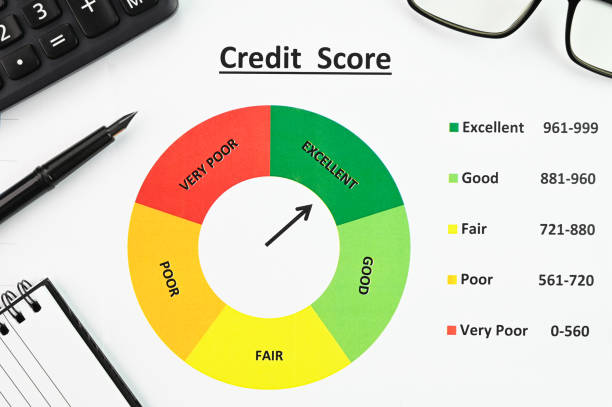 The personal budget, in its most ideal form, is a blueprint for financial freedom, a tool for aligning dreams with dollars. Yet, for an individual grappling with overextended personal debt, this same instrument transforms into a stark and often disheartening map of confinement. It no longer charts a course toward aspirations but instead meticulously documents the siege of income by obligation, revealing the brutal arithmetic of financial overextension.Creating a budget under these circumstances is a humbling exercise in reality. Column after column is dominated by fixed, non-negotiable outputs: the minimum payments on credit cards, the installment loan for the car, the student loan interest. What remains—the amount allocated for groceries, utilities, and housing—often falls painfully short, explaining the very credit card debt the budget is trying to address. This document ceases to be a plan for the future and becomes a forensic analysis of a present crisis, illustrating precisely why every month ends in a deficit. The process can feel futile, as it highlights the problem with excruciating clarity before offering a viable solution.However, this painful clarity is also the budget’s indispensable power. It is the essential first step toward reclaiming control, for one cannot manage what one does not measure. By laying bare the entire financial picture, a budget identifies the leaks—the unnecessary subscriptions, the discretionary spending that slipped through—that can be plugged to create even a small surplus. This surplus becomes the primary weapon against debt, whether directed through the avalanche method toward high-interest balances or the snowball method for psychological wins.Ultimately, a budget under the weight of debt is not about restriction for its own sake, but about reallocation with purpose. It is the strategic document that shifts funds from servicing past consumption toward purchasing future security. Every dollar moved from a credit card payment to a savings account is a small victory in this financial campaign. While it begins as a portrait of confinement, a diligently followed budget becomes the most practical and empowering tool for dismantling the walls of debt, transforming from a record of what cannot be done into a proactive plan for what must be done to achieve liberation.
The personal budget, in its most ideal form, is a blueprint for financial freedom, a tool for aligning dreams with dollars. Yet, for an individual grappling with overextended personal debt, this same instrument transforms into a stark and often disheartening map of confinement. It no longer charts a course toward aspirations but instead meticulously documents the siege of income by obligation, revealing the brutal arithmetic of financial overextension.Creating a budget under these circumstances is a humbling exercise in reality. Column after column is dominated by fixed, non-negotiable outputs: the minimum payments on credit cards, the installment loan for the car, the student loan interest. What remains—the amount allocated for groceries, utilities, and housing—often falls painfully short, explaining the very credit card debt the budget is trying to address. This document ceases to be a plan for the future and becomes a forensic analysis of a present crisis, illustrating precisely why every month ends in a deficit. The process can feel futile, as it highlights the problem with excruciating clarity before offering a viable solution.However, this painful clarity is also the budget’s indispensable power. It is the essential first step toward reclaiming control, for one cannot manage what one does not measure. By laying bare the entire financial picture, a budget identifies the leaks—the unnecessary subscriptions, the discretionary spending that slipped through—that can be plugged to create even a small surplus. This surplus becomes the primary weapon against debt, whether directed through the avalanche method toward high-interest balances or the snowball method for psychological wins.Ultimately, a budget under the weight of debt is not about restriction for its own sake, but about reallocation with purpose. It is the strategic document that shifts funds from servicing past consumption toward purchasing future security. Every dollar moved from a credit card payment to a savings account is a small victory in this financial campaign. While it begins as a portrait of confinement, a diligently followed budget becomes the most practical and empowering tool for dismantling the walls of debt, transforming from a record of what cannot be done into a proactive plan for what must be done to achieve liberation.
Federal law prohibits employers from firing an employee due to a single wage garnishment. However, if you have multiple garnishments, some state laws may allow termination.
It transforms an overwhelming financial situation into a structured plan, reducing anxiety by providing clarity, control, and a visible path forward. Knowing exactly where your money is going eliminates the fear of the unknown.
Yes, fundamentally, it is a type of unsecured consumer credit. You are receiving goods or services upfront with a contractual obligation to pay for them later, which is the definition of credit.
Strategically, targeting debts with high minimum payments (e.g., a personal loan) can provide faster relief to your monthly cash flow by eliminating a large, fixed obligation. However, tackling high-interest debt (e.g., credit cards) saves you more money long-term. A hybrid approach is often best.
Your DTI (total monthly debt payments divided by gross monthly income) is a key metric. Keeping it below 36% ensures you have enough income to cover your debts and living expenses without needing to borrow more, preventing overextension.